Labyrinth progress, Sento exhibition, Tokyo podcast
Some short updates after a busy start to the year
Hello readers, sorry for the radio silence in this space over the past month. Ideally, a post about once every week would let me keep up with what I want to write about, but since mid-December, we’ve had two weeks of Labyrinth House construction, and an extended bout of the flu wreaked havoc on my tight schedule in January. I started a few posts but shelved them for later publication when I have more space to think. Clearly, writing a regular blog means choosing topics that are doable within whatever time constraints you find yourself in. Today is an easy lift: updates on Labyrinth House, our annual Sento & Neighborhood exhibition, and an appearance on an Economist podcast about Tokyo.
Labyrinth House phase two nearing completion
Our fundraising campaign for Labyrinth House has gone great! We reached our end-of-year goal, which is incredible and gives us enough money to finish the second stage that contains our community store and common space. Thank you so much to everyone who contributed. If you haven’t yet but are inspired to contribute, my collaborators and I still hope to raise another million yen this year for phase three, which will be a two-story library and local archive space built inside the partially-collapsed storehouse. You can read about the project and contribute below:
So how’s the construction going? Last week we really got started on interior finishes, and we’re trying to reach a state of semi-completion next month—that means electricity flowing, kitchen finished, floors oiled and tatamis installed. Here’s some photos from week #32:
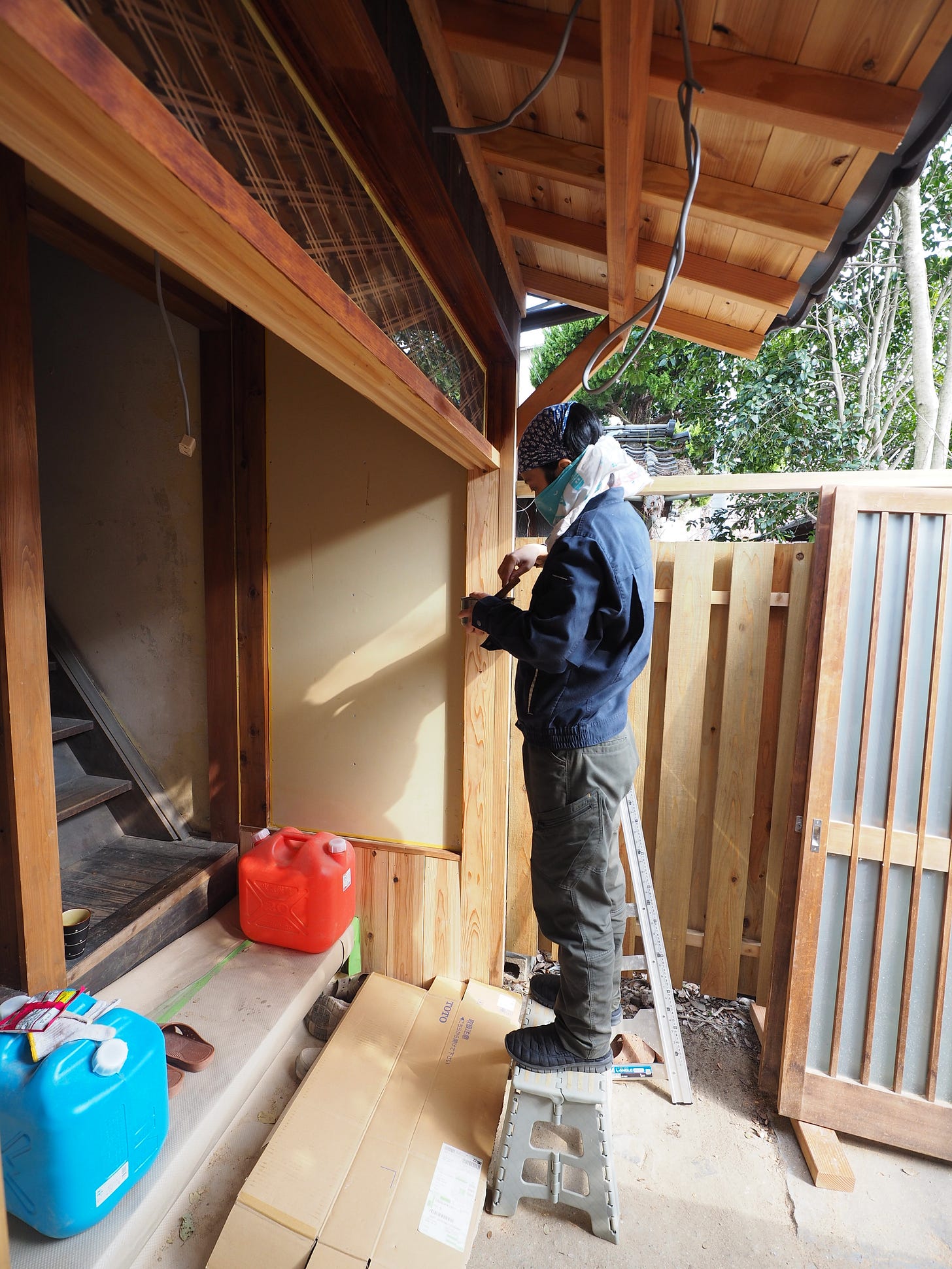
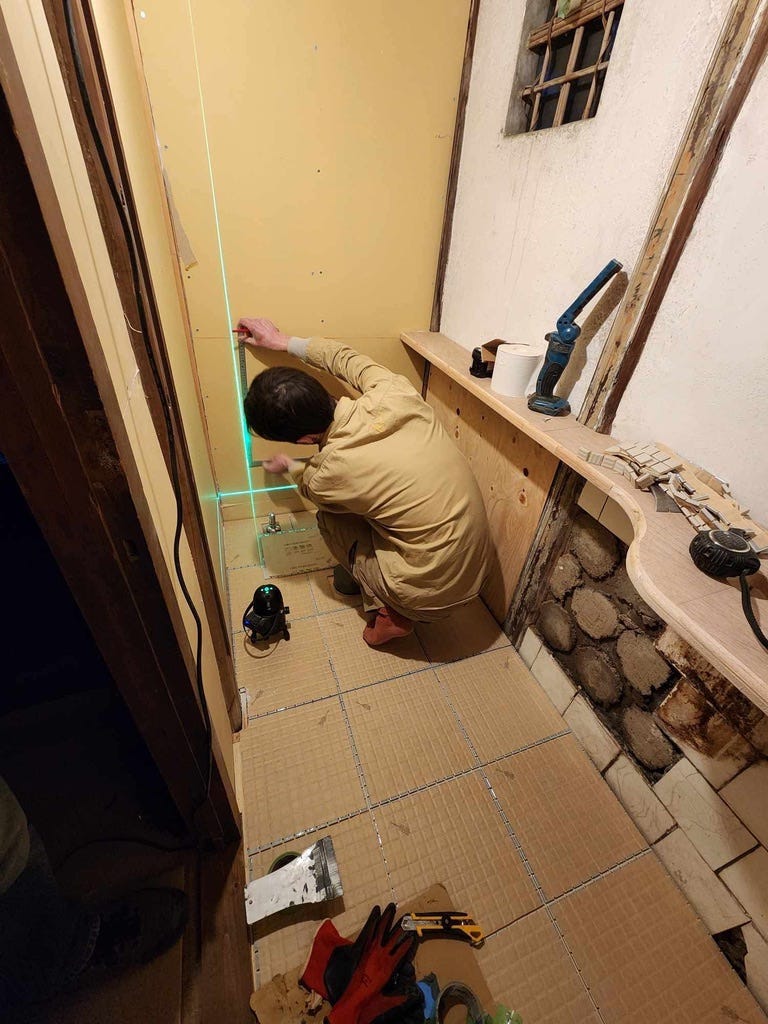
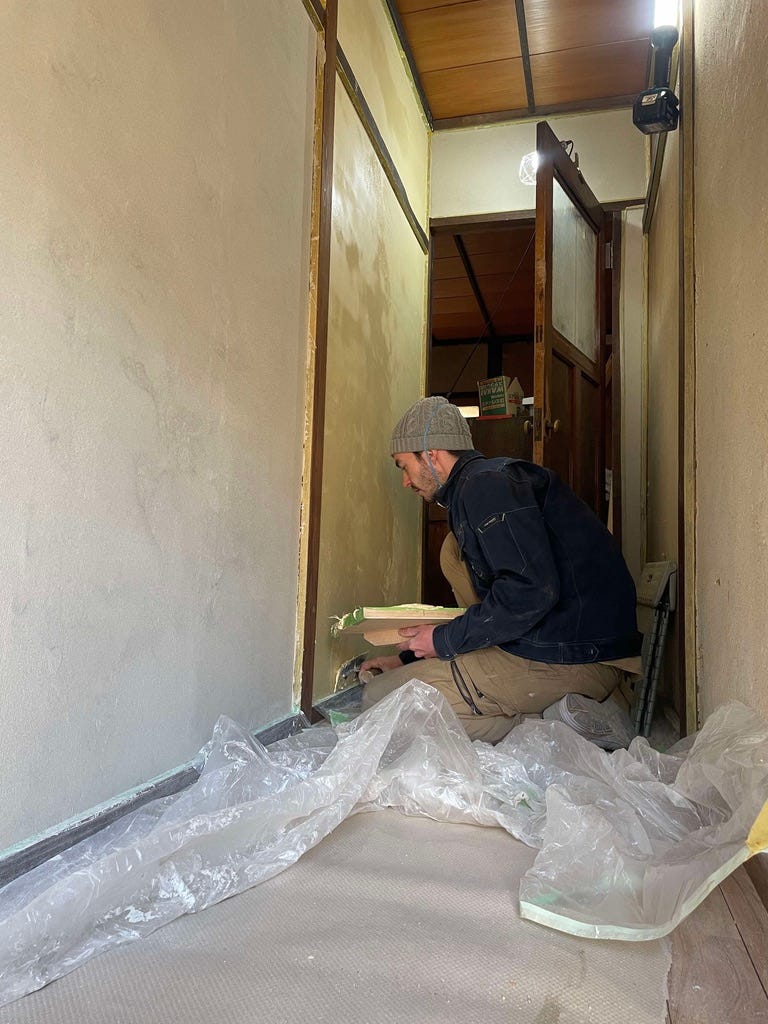
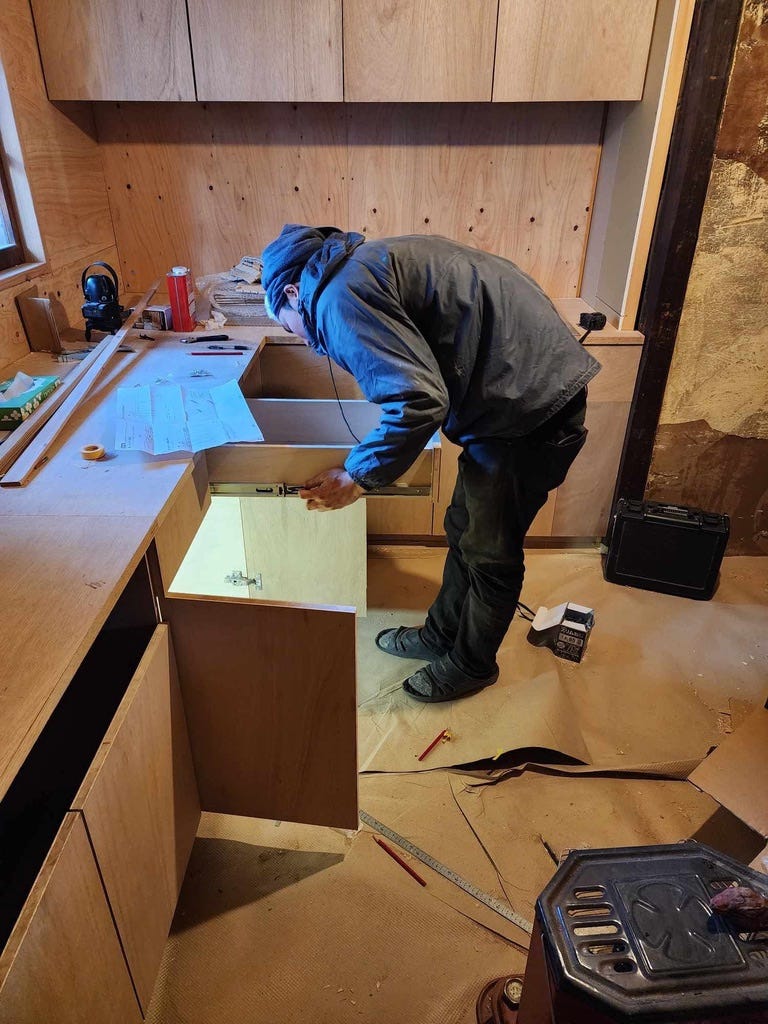
On the final day, we got a brand new toilet (with water!), which feels pretty epochal after living for several years in the construction site. Our electricians are finishing up wiring and we should get a hookup in a few weeks.
This is my fifth renovation project since 2017, and all that experience has finally made me relatively competent at anticipating what comes next, managing the flow of the project, and ironing out details before they turn into snags. In my weeks off in Tokyo, I mull over design, draw detailed plans in Sketchup and Affinity Designer when necessary, and scour websites for materials—mostly Rakuten, Amazon, and construction supply shop Monotaro. As we get into finishes, I am also buying a lot of tiles and fixtures from Toolbox, which is more expensive but nicer quality, and they have a Tokyo showroom so I don’t have to buy things sight unseen.
As anyone who’s managed a renovation project knows, doing all this takes a huge amount of attention, in addition to the weeks of actual construction. “You’re thinking about your house again!” my wife moans whenever I start gazing into the distance in the run-up to a construction week. Usually, I’m guilty as charged.
On a typical day of construction, we have 3-5 people working on the site, and I run around assigning tasks according to ability and teaching people new things if they’re unfamiliar. I brainstorm with the experienced members like Fu about how to construct something, search for info online, and run to the home center to pick up materials. On days with lots of people on site, I try to choose some carpentry for myself that I won’t get grumpy about being interrupted every ten minutes with questions. When its just me and a couple of the core members, I choose things that require more focus. While I’ve got my head full with construction details, other members are thinking about food, stepping away to prepare lunch or dinner and keep us all going. It’s a great system.
With semi-completion just around the corner, it will be the first time in four years that a big part of mind is not occupied with an ongoing renovation project. Sure, my mosaic tile mural in the bath and other less important things will remain to be completed in the fall, but I am already excited by the thought of having more headspace to devote to writing and other pursuits.
“My Sento & Neighborhood” exhibition
Sento & Neighborhood will be holding our second annual exhibition of our field research into the public baths of Kita Ward, running from February 21-March 4 in an abandoned kakuuchi next to the historic Iwa-no-yu public bath.
Exhibition period: 2/21-3/4, 15:00-20:00, closed Wednesday-Friday.
Location: Old Echigoya Liquor Shop, 31-1 Iwabuchicho, Kita-ku, Tokyo
On February 21 (Friday), Tanaka Mizuki, one of the last painters of sento wall murals, will repaint the Mt. Fuji mural at Iwa-no-yu with a public audience from one to six p.m. A very rare opportunity to see this process!
This year my colleagues documented eight baths and local neighborhoods in the Akabane and Iwabuchi areas in the far northern reaches of the city. I joined in when I could for interviews of the bath owners, visits to local businesses, and workshops with the bathhouse regulars, who tend to be among the most knowledgable people about neighborhood history. We publish a newspaper about each bath and its neighborhood, and make postcards of a few of the surrounding shops. My multi-talented colleague Mari Okamoto distills the workshop results into “Memory Maps” of each bathhouse neighborhood. Here’s the map for Heiwa-yu, a lovely bath in Oji-Kamiya. It sits smack-dab in the middle of what used to be a village along an Edo-era highway, so there were a ton of shops around it until just a few decades ago. All the solid pink dots are now closed, only a couple of hair salons remain.
People have great memories, and trade personal stories about childhood shenanigans and quirky storekeepers, like the smoky fishmonger on the corner that wrapped grilled mackerel in newspaper, the rice shop that had an unusual vending machine that sold (often double-yolk) eggs, and the tiny ferry boat that was one of the last to cross the Sumida River into the 1960s, before a bridge was built and the old boat pilot used his government payout to buy nearby plot of land.
The neighborhoods in their stories, of course, are almost entirely gone—shops shuttered, old buildings torn down for sterile prefab boxes with carports, once-bustling streets mostly empty as people opt to live in private and digital worlds instead. We’re doing ethnography of the past, trying to preserve a record of the landscapes that baths were once a part of. There’s real curiosity and pleasure in unlocking all the local history stored in the archives of individual lives, and sadness and anger, too. For me, this sadness is more than just nostalgic attachment to the old, it stems from a recognition that the physical city that has replaced these social worlds curtails our ability to connect locally with others, that our neighborhoods are no longer rich human mosaics, but to many people, nothing more than a coordinate of their private realm on a wider map. Our society seems to be reaching peak disassociation from the local bonds that have always kept us rooted. Digging into the baths and neighborhoods that remain in living memory can help us imagine what sort of spaces and cultures we ought to create in the future, if we want to turn the tide toward a more humanistic urbanism.
For two weeks, at least, we’ll open up one of the old neighborhood spaces, and share a bit of our worldview. Come take a look, get a set of our newspapers, and soak in a bath that is truly of its local place.
Appearance on Tokyo podcast
My dear friend Noah Sneider, who writes for the Economist in Tokyo, recently reported a podcast on Tokyo urbanism and kindly invited me to be a part of the show. We took a walk around my neighborhood, stopping at local shops, visited Inari-yu and Tokyo Little House, and talked about the sort of stuff I just wrote above.
Unfortunately, the podcast is paywalled, but if you have an Economist subscription, please listen below! Noah has an interesting family connection to Tokyo and really understands the city. You can find the podcast on the Economist website here, or Apple Podcasts here.
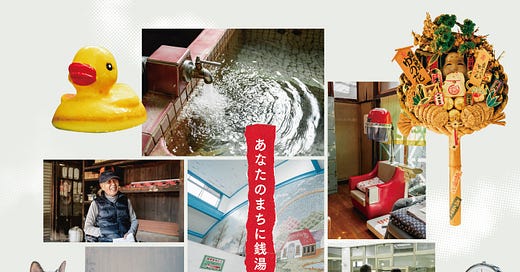


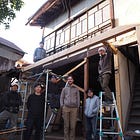
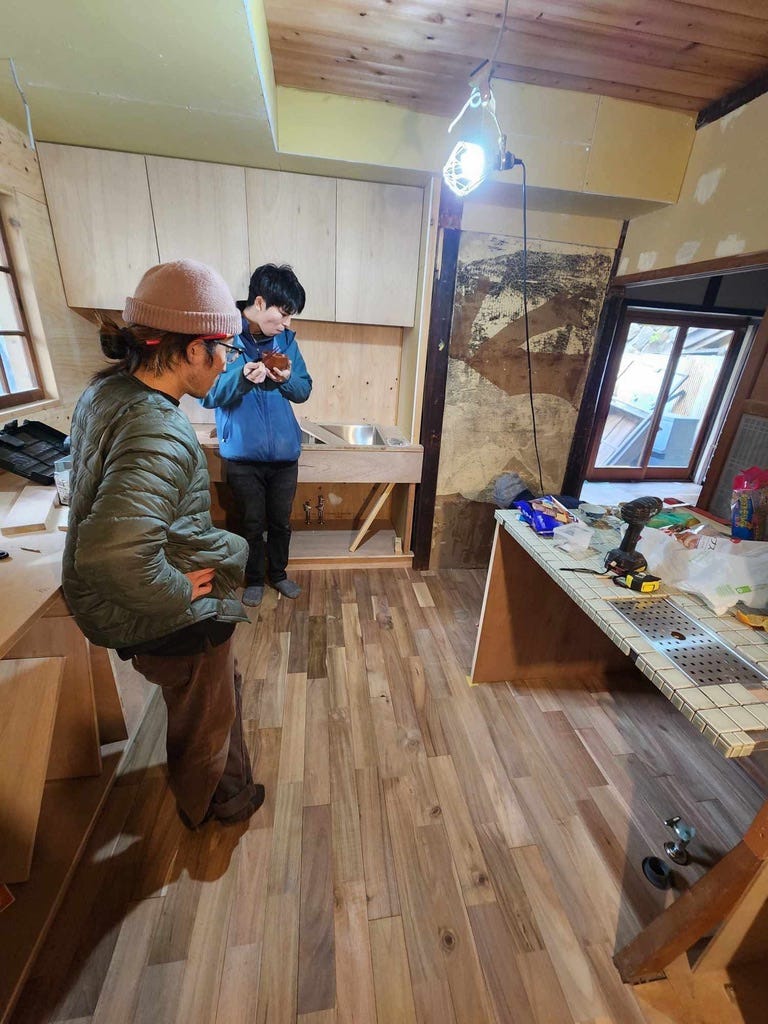

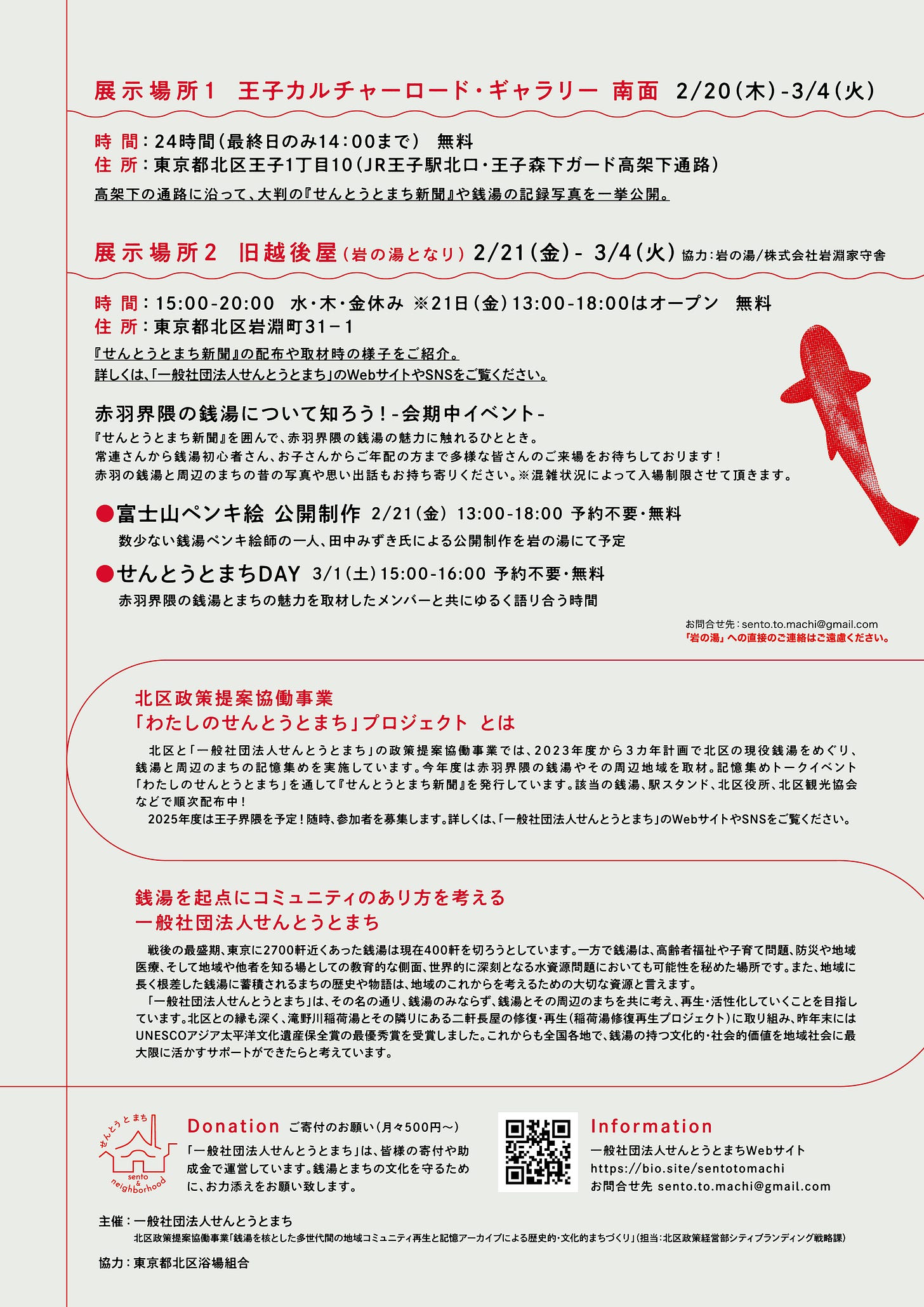
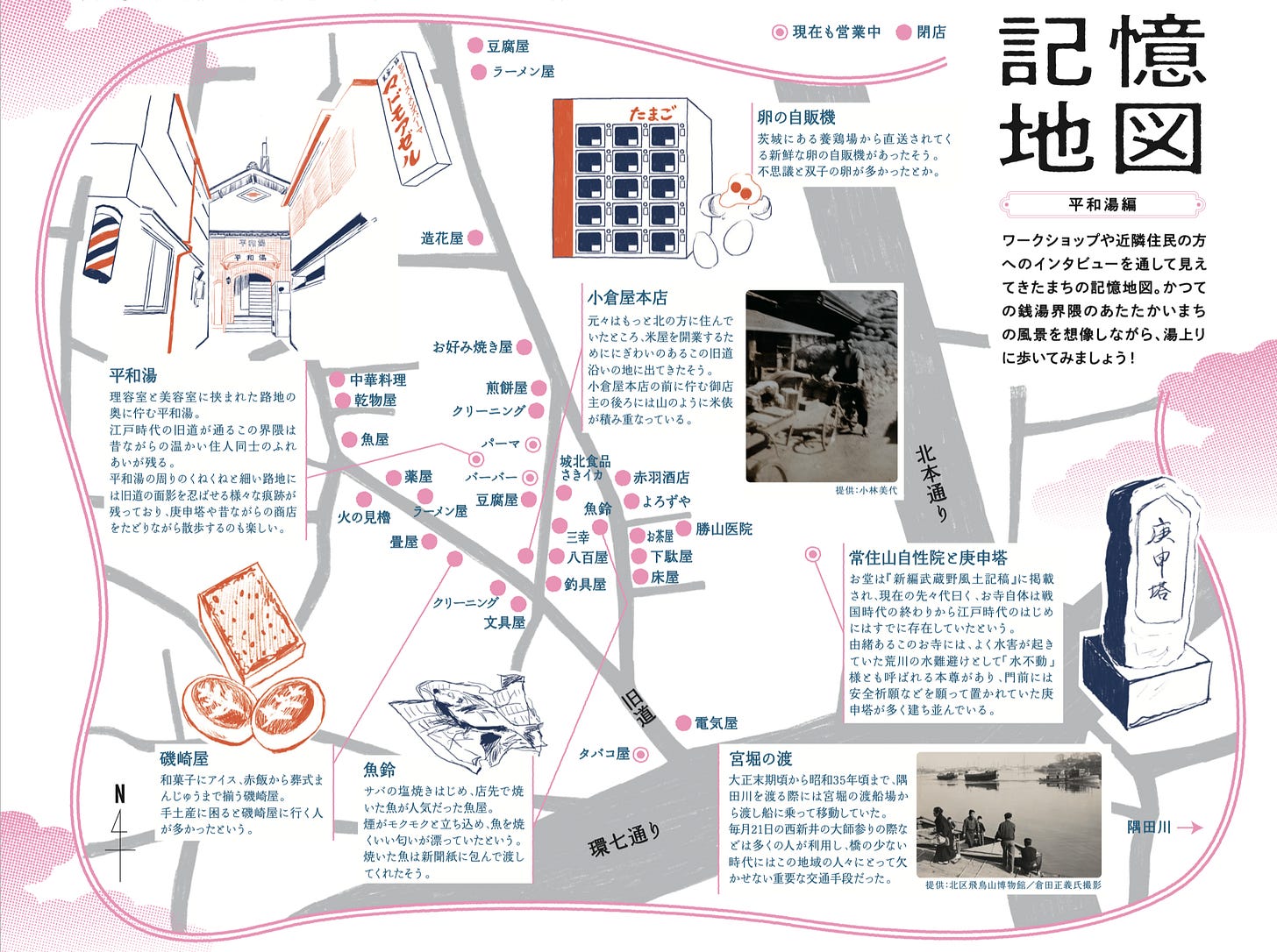
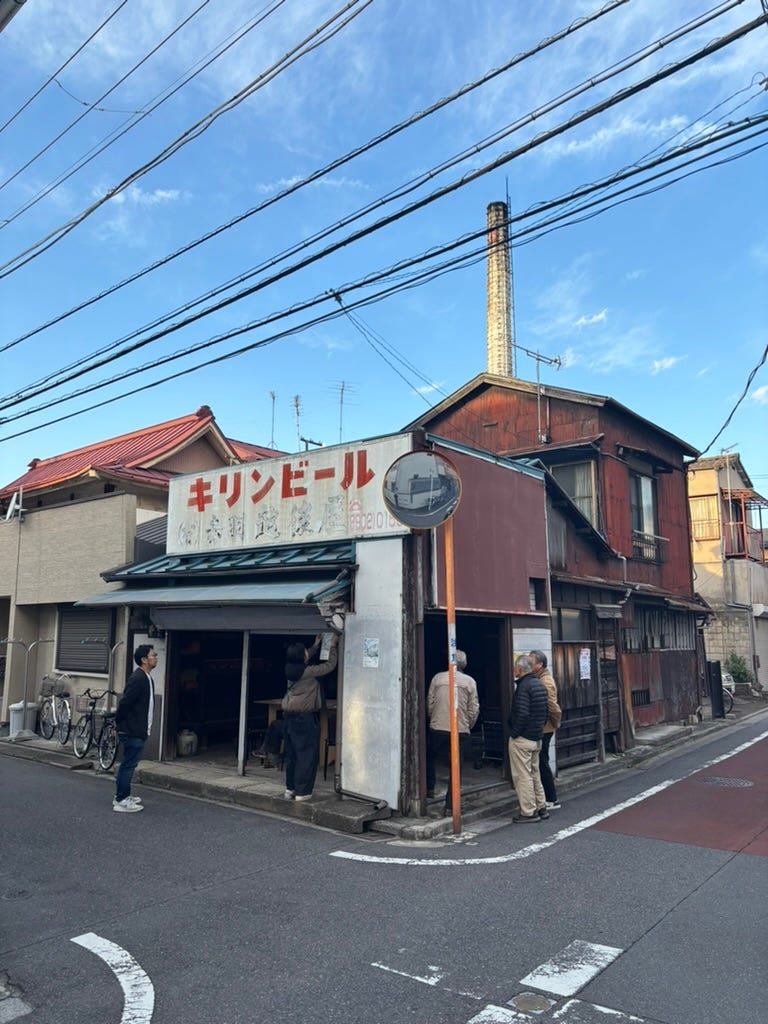
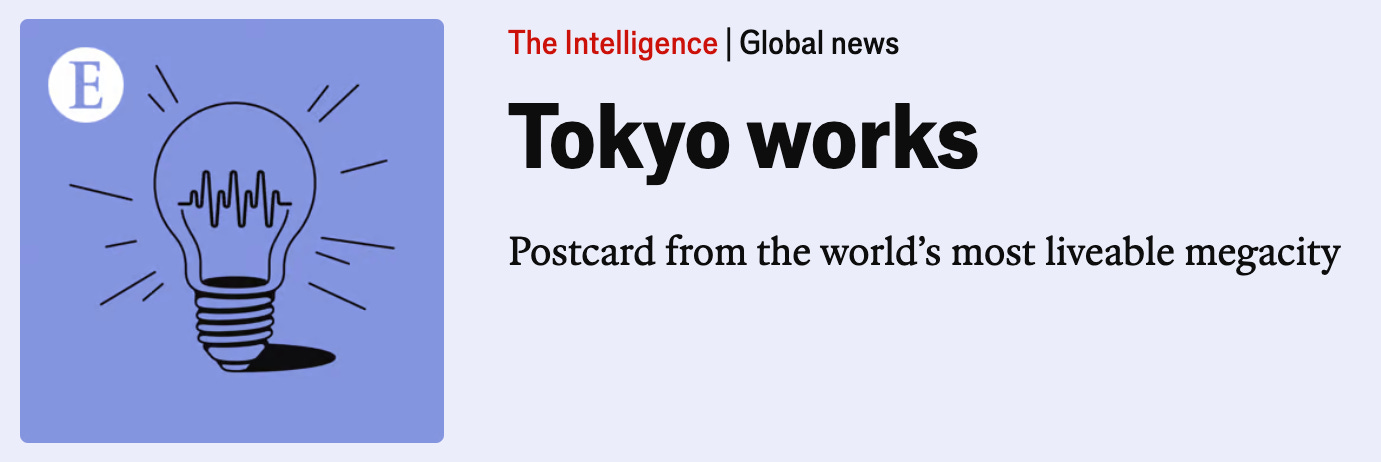
When I lived in Togoshi Ginza 30+ years ago there was a great sento opposite my block of flats. Sadly it's been knocked down and turned into another block of flats now as I discovered when I ran past it a few years ago.
I'm so glad someone is doing the good work of keeping the memories alive when the buildings go and trying to keep the buildings going too.
Since I'm a new subscriber, I'd never heard of kakuuchi before, but I recognize the places. Some of Yoshida Rui's Sakaba visits on BS-TBS go to these places, most recently I recall seeing him visit one in IIRC Yokosuka.
The wife and I are great fans of their close relative the tachinomiya. Those google maps will usually show if you search your local area for 立ち飲み屋, but not always but google really doesn't understand. Now I know the name I see that 角打ち in google maps does a decent job of finding them too. Next time I'm in a bigger city we will try them for a zero-jikai
I have put the exhibition on my schedule for the 21st. Hope I can make it and see you there.